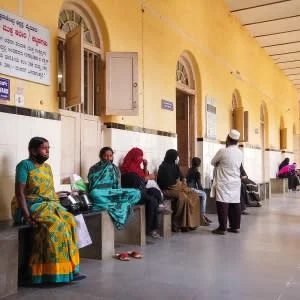India, a low-income country, has a lower cancer rate than countries with larger economies, such as the U.S. Whilst India has approximately 100 cases per 100,000 people, the U.S. has 300 cases per 100,000. This could be the result of India’s younger population; it is normally with age that the chances of getting cancer increase.
Unfortunately, only up to a third of patients survive post five years of being diagnosed with cancer in India. According to a Lancet Oncology study, more women are diagnosed with cancer than men in India, despite statistics showing that globally men report a 25% higher incidence of cancer than women.
Breast, cervical, ovarian and uterine cancer account for more than 70% of cancers in women in India. Oncologists have further discovered that the onset of breast and ovarian cancer appear in women a decade younger than the peak age in high-income countries a consequence of the environment or genetic factors.
Cancers can be linked to the genes we inherit. However, genomic screening is not the most useful method for discovering the cause in the majority of female cancers in India. This is due to the fact that less than 10%of breast cancers are inherited in India. Therefore, the uptick in cases could be the result of environmental factors.
In Delhi, the incidence of breast cancer is the highest which may be because diagnosis rates are higher. Generally, however, diagnosis in India is made in the third and fourth stages, potentially because of lack of awareness and reluctance to attend screening or attend doctor visits. This contrasts the U.S. where 80% of breast cancers are diagnosed early in the first and second stages.
Cervical cancer, one of the most preventable cancers, stands at being the second most common cancer among females in India. This highlights the need for better promotion of reproductive sexual health, widespread launch of free cancer screening and the need for genomic studies to identify country-specific genetic biomarkers.
Finally, the Lancet suggests using parallel studies as a method for determining the influence of different environmental factors on the development of cancer. For instance, women cancer patients in the Punjab region of India may be studied alongside the Punjabi diaspora in the UK. As they are two genetically related populations, the results will illustrate how much of an impact the environment has on the development of cancer.
For more Women's Health news Click here
Source:BBC News
Image Credit: iStock






.png)




